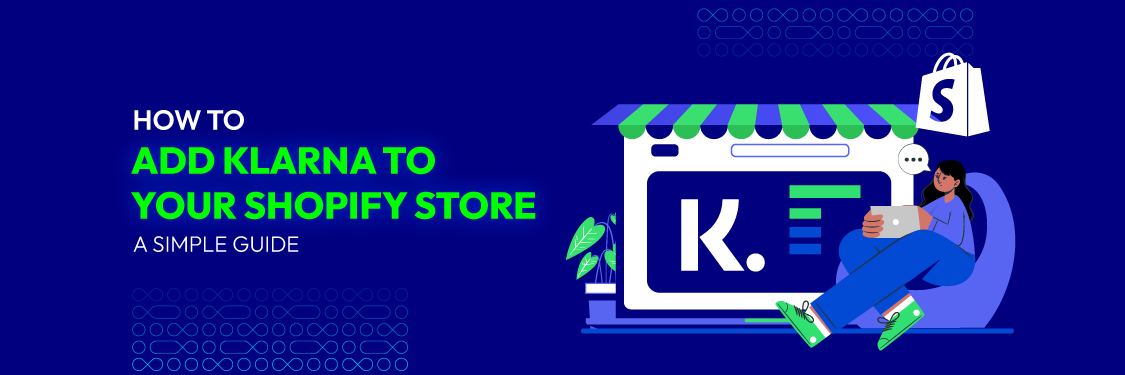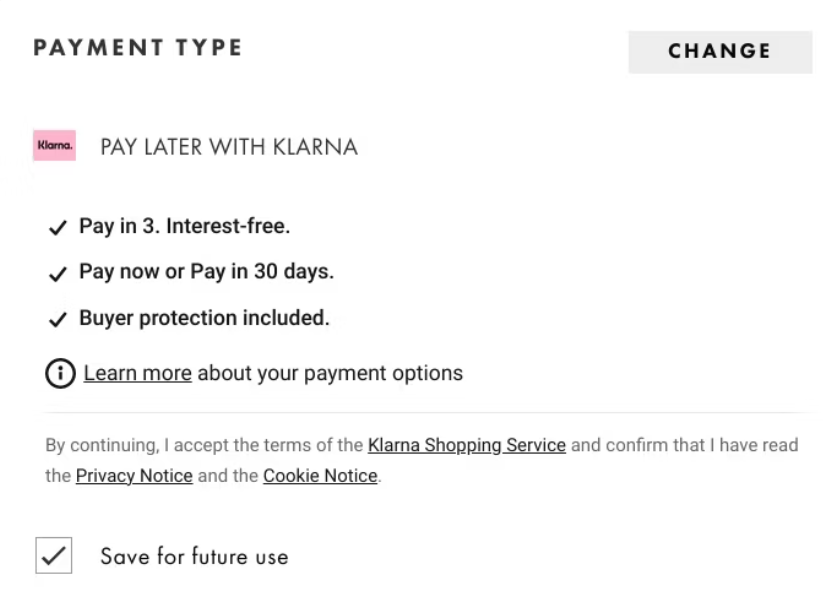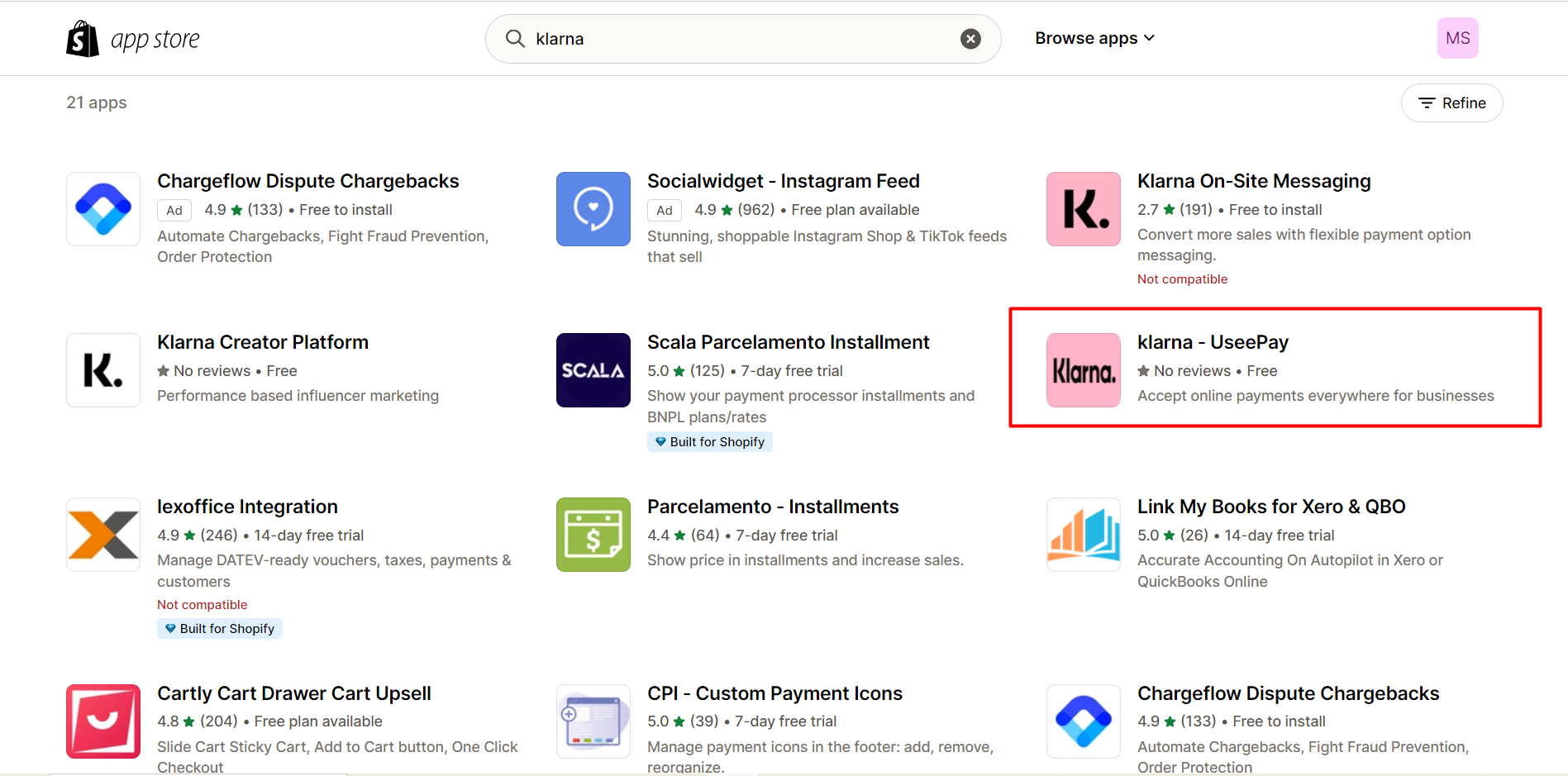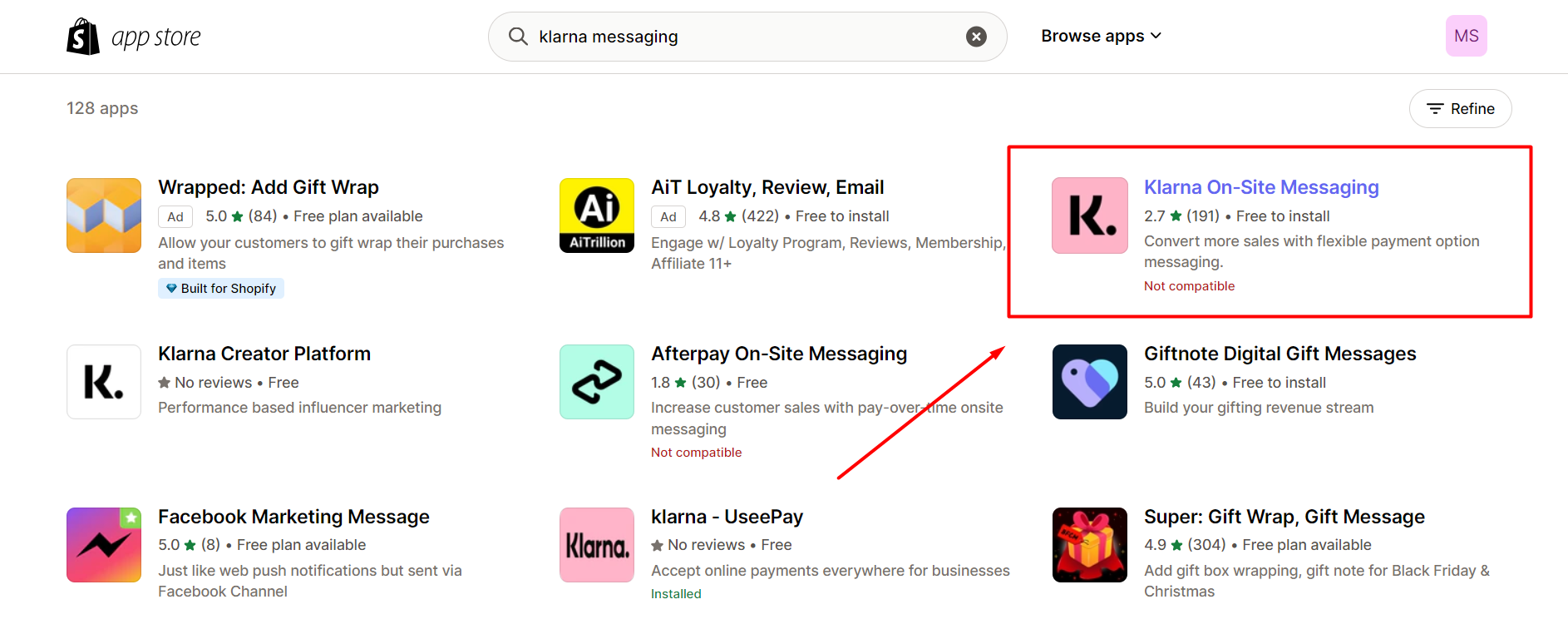How to Add Klarna to Your Shopify Store: A Simple Guide
Summer Nguyen | 01-24-2024

Online shopping is more common than ever, but not everyone can pay for products and services upfront. That’s where Klarna can come in handy. You may have seen this icon when paying for something online, or someone has suggested you try the service.
Klarna is a popular service on e-commerce platforms, and Shopify is not an exception. Klarna Shopify will bring users more impressive and convenient shopping experiences. This article will inform readers about the benefits, how to integrate Klarna with Shopify, and notes on when to use it.
What is Klarna? How Does It Work?
Klarna is a popular “buy now, pay later” (BNPL) service. It allows you to shop online and get the items you want right away, but pay for them later in different ways. Here’s how it works:
- Choose Klarna at checkout: Look for the pink Klarna badge at participating stores online. Select Klarna as your payment method.
- Choose your payment option: Klarna offers different ways to pay:
- Pay in 4: Split your purchase into 4 equal interest-free payments over 6 weeks.
- Pay in 30 days: Get the item now and pay for it in full within 30 days, no interest.
- Pay over time: For larger purchases, Klarna offers longer-term financing plans with interest (similar to a credit card).
- Manage everything in the Klarna app: Download the Klarna app to track your purchases, payments, and due dates. You can also make payments and manage your account easily.

The benefits of integrating Klarna with Shopify
Klarna Shopify integration offers several advantages for both merchants and customers:
- Enhanced checkout experience: Klarna simplifies the checkout process and reduces cart abandonment by offering a variety of payment choices. Customers can choose between “Pay in 30 Days” and payment plans, increasing flexibility.
- Increased sales: Offering different payment alternatives frequently leads to higher conversion rates. Customers value Klarna’s flexibility, encouraging them to make purchases they might not have made otherwise.
- Reduced risk for merchants: Klarna assumes the risk of nonpayment, guaranteeing that money is received by the merchant as soon as possible, even if the consumer selects an installment plan.
- Higher average order value: When allowed to split payments over time, customers tend to spend more, resulting in higher average order values.
- Improved customer loyalty: Merchants utilizing Klarna on Shopify may increase consumer loyalty and happiness by providing a smoother, more flexible payment experience.
- Easy integration: The integration of Klarna with Shopify is relatively simple, requiring little technical knowledge and allowing merchants to adopt these payment methods swiftly.

Overall, the integration of Klarna with Shopify is a win-win situation for both parties, giving a better shopping experience for customers while increasing sales and lowering risks for businesses.
How to add Klarna to Shopify
Integrating Klarna with your Shopify store involves a few steps to enable Klarna as a payment option. We will introduce you to the two most popular and easiest methods about how to add Klarna to Shopify.
Method 1: Integrate directly
Klarna’s integration with Shopify required the Klarna Payments app to use Klarna as a payment method. Here is a step-by-step guide to integrating the Klarna Payments app on Shopify.
Step 1: Install the Klarna payment application
To integrate Klarna into Shopify, you must first download this application on your Shopify store. Log in to your Shopify account as an admin to control and edit the app store on Shopify. On the application search toolbar, type the keyword “Klarna” and click the install button to start downloading the application on the store.

After installation, you must allow Klarna to access your Shopify store data. In other words, you will have to authorize using this application. In addition to accessing data, you must extend additional necessary permissions to connect Klarna on Shopify.
Step 2: Configure Klarna settings for seamless integration
The next step is integrating Klarna’s configuration to work seamlessly with Shopify. Fill in your Klarna API credentials from the Shopify homepage to complete the integration. Then, you must press the save settings button to connect these two applications. This authentication code will help ensure Klarna and Shopify are properly integrated and working effectively.

Once you have completed the above step, you can adjust your Shopify store’s look and payment options. For example, you can choose language, payment method, currency, or other Klarna features. You can take some time to explore the convenient customizations of this application. Surely, you will find designs that suit your products and have a customer-friendly interface.
Step 3: Activate your Klarna payment methods
The above two steps have helped you integrate Klarna with your Shopify store, and now you need to create payment options for customers. First, go to Klarna’s Shopify homepage. You can freely adjust different payment options to suit your customers’ needs. Klarna normally has 3 payment options: installment, pay in 30 days, and financing. Determine the appropriate payment method and save this setting to serve customers when they pay.

You can also customize the maximum and minimum order amounts for different payment options. It will help the store control the customer’s ability to pay and help them choose the appropriate payment method based only on their purchase invoice.
Another add-on you can consider for your Shopify store is displaying Klarna on your product pages. This will let customers know that it is possible to pay with Klarna when making purchases in your store. From there, your store will gain customers’ trust and help Klarna become their priority whenever they pay for goods.
Step 4: Test and launch
Following setup, it is critical to conduct test transactions to confirm that Klarna payments function properly on your Shopify store. Many integrations or apps have a sandbox or test mode that allows you to mimic transactions without processing money. After you have checked and ensured everything works properly, you may start accepting Klarna payments from your clients.
Step 5: Activate Klarna On-site messaging app
This app helps Shopify stores notify customers directly about their order status during the ordering process. The process of activating klarna’s On-site messaging app on Shopify involves a few steps:
- Install the Klarna On-Site Messaging App: Head to the Shopify App Store and search for the Klarna On-site Messaging app. After that, install the app to integrate it into your Shopify store.

- Access the app settings: Access the Klarna On-site Messaging app within your Shopify admin panel once installed. This is typically found in the Apps section.
- Customize messaging: Within the Klarna On-site Messaging app, you can customize the messages to align with your store’s branding and the specific Klarna services you offer. This includes details about “Buy Now, Pay Later” or other Klarna payment options available.
- Generate code or script: The app usually provides a code snippet or script.
- Integrate with your Shopify theme: Navigate to your Shopify theme settings or the page where you want the Klarna on-site messaging to appear. Then, insert the provided Klarna code snippet within your Shopify theme’s HTML or script section. Depending on where you want the messaging to occur, this could be in the theme code or a specific page template.
- Test and Verify: After implementing the code, test your Shopify store to ensure the Klarna on-site messaging appears correctly.
Remember that the particular procedures may vary slightly depending on the app’s UI and your Shopify theme. Follow the steps provided by the Klarna On-site Messaging app and consult their support documentation if you need help integrating the app with your Shopify store.
Best practices for using Klarna on Shopify

Using Klarna effectively on Shopify involves a few best practices to ensure a seamless customer experience and optimal use of the service:
- Clear communication: Ensure your customers know Klarna as a payment alternative. Clearly display Klarna’s various services (such as Pay Later and Slice It) and their benefits on your Shopify store. Give details on how these alternatives function and their terms.
- Smooth integration: Check that the integration of Klarna with your Shopify store is smooth. It should be thoroughly tested to ensure that payment processing, order management, and refunds all work properly.
- Transparency on costs and policies: Any additional fees or terms related to using Klarna should be communicated clearly. Be upfront about any potential interest rates or fees that may apply based on the Klarna service your consumers select.
- Payment options and plans: Klarna provides various payment options, such as “Buy Now, Pay Later” and installment plans. Understand how these options will be presented to your customers during checkout. Ensure your consumers know the payment plans and the terms and conditions that go with them.
- Checkout experience: Check that the checkout procedure is simple and that the Klarna payment alternatives are visible. Customers are more likely to complete their purchases when the checkout procedure is simple and user-friendly.
- Sandbox mode: Test Klarna payments in a sandbox environment before going live to confirm all capabilities work as planned. This eliminates potential problems or inaccuracies when clients utilize Klarna for real-world transactions.
- Customer support and information: Provide customer service for questions or concerns about using Klarna. Make it easy for customers to find information about Klarna’s services and policies on your website.
- Regular updates and monitoring: Maintain the integration and app. Keep an eye on the functioning of Klarna payments on your Shopify site to handle any technical issues or modifications as soon as possible.
- Opt for multiple Klarna services: If your business model allows it, provide numerous Klarna payment services. Offering alternatives such as Pay Later or Slice It can accommodate a variety of consumer preferences.
- Compliance and security: Ensure your store complies with all payment processing and data security standards. Klarna offers safe payment methods, but you must also maintain a secure environment.
Following these best practices, you may efficiently use Klarna on your Shopify store, giving customers a convenient and flexible payment experience.
Conclusion
Klarna online payment has become a popular method many use, making transactions faster and easier. Therefore, creating a good customer experience in payment methods will be extremely important to help your stores increase their competitive advantage over competitors in the market.
This article has introduced you to integrating the Klarna payment application with the Shopify e-commerce platform and how to use it effectively. Klarna Shopify integration will increase your stores’ profits and satisfy customers with their shopping experiences.






![Top 20+ Must-have Shopify Apps for 2025 [Free & Paid] - Mageplaza](https://cdn2.mageplaza.com/media/blog/must-have-shopify-apps/top-must-have-shopify-apps.png)
![[2025 Updates] Top 10+ Upsell Apps for Shopify - Mageplaza](https://cdn2.mageplaza.com/media/blog/best-upsell-shopify-app/cover.png)